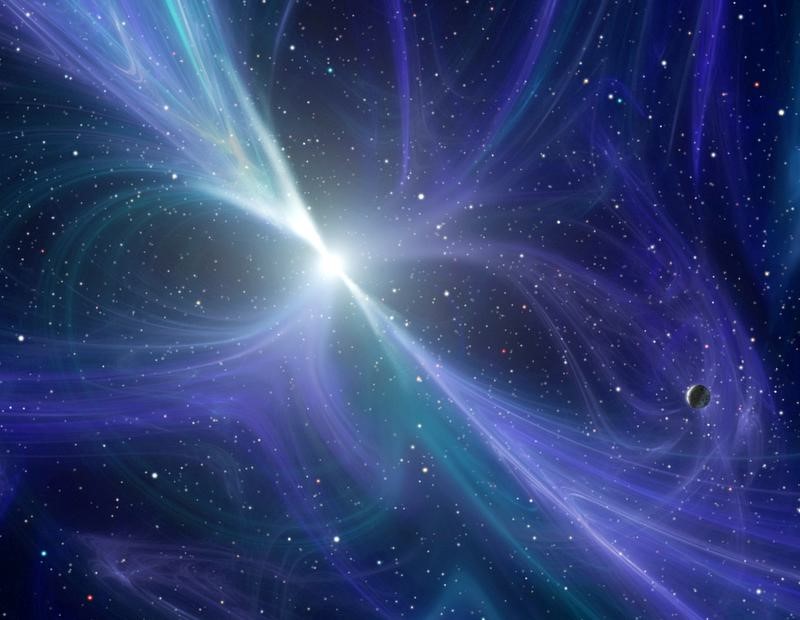Description

Source: Hindu
Disclaimer: Copyright infringement not intended.
Context
- One recent finding reported that three-quark clumps are more likely to form than two-quark clumps when a particular type of quark is more densely surrounded by some other particles.
- Another study reported observing clumps composed entirely of the heavier quarks.
Details
Neutron Stars
- Formation: When massive stars undergo supernova explosions, their cores collapse under gravity's immense pressure. This collapse fuses protons and electrons into neutrons, forming incredibly dense objects known as neutron stars.
- Composition: Neutron stars are composed primarily of neutrons, packed into a sphere with immense density. The pressure within neutron stars is so extreme that it could potentially force neutrons into a new state of matter.
Quark Matter
- Quark Clusters: Quarks cannot exist in isolation and form groups known as hadrons, such as protons and neutrons. Recent studies have revealed insights into the behavior of quark clusters, including the preference for three-quark clumps over two-quark clumps under specific conditions.
- Heavy-Quark Clusters: Observations have also shown the existence of clumps composed entirely of heavier quarks. Understanding these heavy-quark clusters is crucial for completing our understanding of all quarks and their impact on phenomena like nuclear fusion and stellar evolution.

Quark Stars
- The concept of quark stars arises from the possibility that there could be stars too massive to form neutron stars but not massive enough to form black holes.
- These hypothetical stars, if they exist, would be composed of quark matter instead of neutrons.
- Studies have suggested that the interiors of massive neutron stars may have a high probability of being composed of quark matter, potentially ranging from 80-90%.
- However, due to limited observational data, more research is needed to confirm the existence and properties of quark stars.
Experimental Challenges
- Understanding the composition of neutron stars and the potential presence of quark matter relies heavily on astrophysical observations. However, conducting direct experiments on neutron stars is currently impossible, making observational data crucial for advancing our knowledge.
- Researchers combine astrophysical observations with theoretical calculations to develop models that predict the presence of quark matter within neutron stars. Supercomputers play a significant role in simulating these complex scenarios.
Quantum Chromodynamics (QCD)
- The behavior of quarks and their interactions are described by Quantum Chromodynamics (QCD), a fundamental theory in particle physics.
- QCD predicts that under extreme conditions of temperature and pressure, nuclear matter can undergo deconfinement, leading to the formation of a quark-gluon plasma.
- Experiments conducted at high-energy particle accelerators like the Large Hadron Collider have provided evidence of quark-gluon plasma, supporting the predictions of QCD.
- These experiments shed light on the early universe's conditions shortly after the Big Bang.
- While the Standard Model successfully describes the behavior of quarks and other fundamental particles, it has limitations, such as its inability to explain gravity or dark matter.
- Physicists continue to search for a more complete theory that can unify all fundamental forces.
What are Quarks?
- Quarks are elementary particles and one of the basic building blocks of matter. They are believed to be point-like entities with no internal structure.
- Electric Charge: Quarks carry fractional electric charges. They are the only known particles to exhibit this property.
- Spin: Quarks have a half-integer spin, specifically 1221 in natural units (h-bar).
- Color Charge: Quarks carry a property called color charge, which is related to the strong nuclear force.
Types of Quarks:
- Quarks come in six known types, or flavors:
- Up Quark (u): Symbolized as "u", it has a charge of +23e+32e (where "e" is the elementary charge) and is the lightest quark.
- Down Quark (d): Symbolized as "d", it has a charge of −13e−31e and is also relatively light.
- Charm Quark (c): Symbolized as "c", it has a charge of +23e+32e and is heavier than up and down quarks.
- Strange Quark (s): Symbolized as "s", it has a charge of −13e−31e and is heavier than up and down quarks.
- Top Quark (t): Symbolized as "t", it has a charge of +23e+32e and is the heaviest known quark.
- Bottom Quark (b): Symbolized as "b", it has a charge of −13e−31e and is heavier than up and down quarks.
Quark Interactions and the Strong Force:
- Color Charge: Quarks carry a color charge, which comes in three types: red, green, and blue, as well as their corresponding anticolors (anti-red, anti-green, and anti-blue). The term "color" here is a metaphor, as it has no relation to visual perception.
- Confinement: Quarks are always bound together in groups (called hadrons) due to the strong force, which is mediated by particles called gluons.
- Gluons: Gluons are the force carriers of the strong force, much like photons are for electromagnetism. Gluons can interact with quarks, carrying the color charge and thus binding them together.
Quark Combinations:
- Hadrons: Quarks combine to form composite particles called hadrons. There are two main types of hadrons:
- Baryons: Made of three quarks, such as protons (uud) and neutrons (udd).
- Mesons: Made of one quark and one antiquark, such as pions (ud‾d).
- Flavor Changing Neutral Currents (FCNC): Processes where quarks of one flavor transform into quarks of another flavor without changing electric charge. These processes are rare and are important for understanding phenomena like rare decays.
Must read articles:
ElementaryParticles
Sources:
Hindu
|
PRACTICE QUESTION
Q. Understanding the behavior of quarks and their potential existence in extreme astrophysical environments is essential for unraveling the mysteries of stellar evolution. Comment. (250 words)
|














